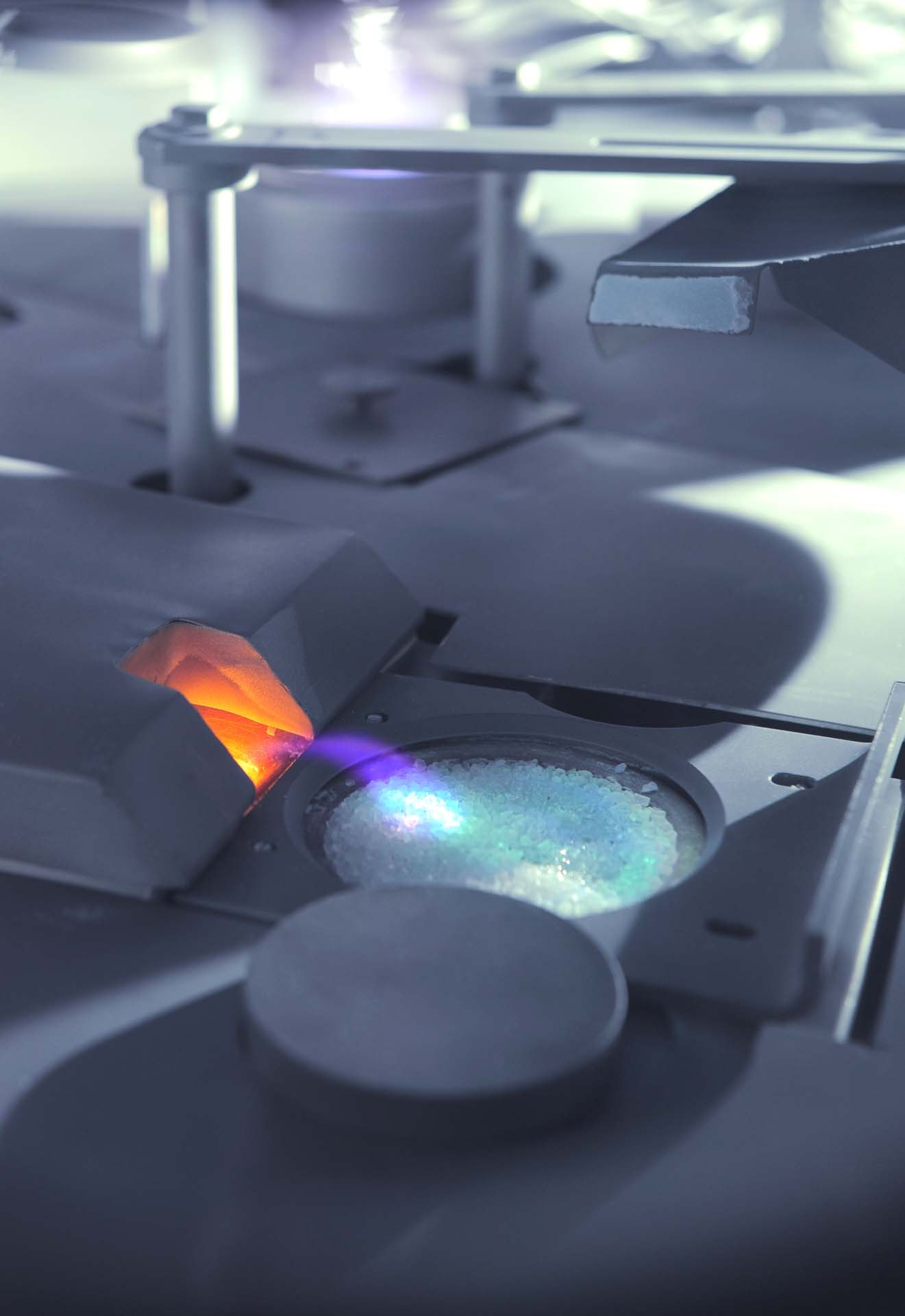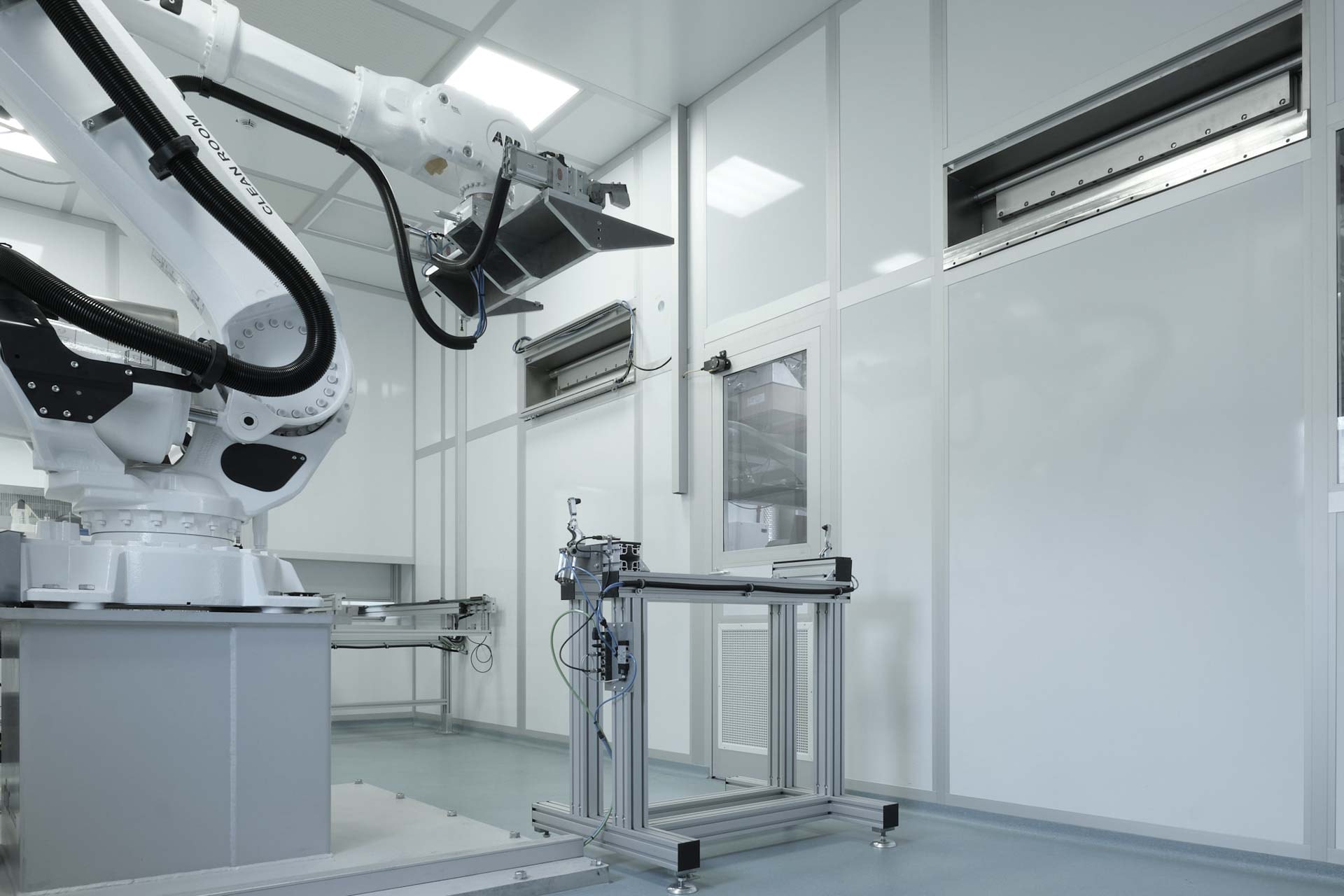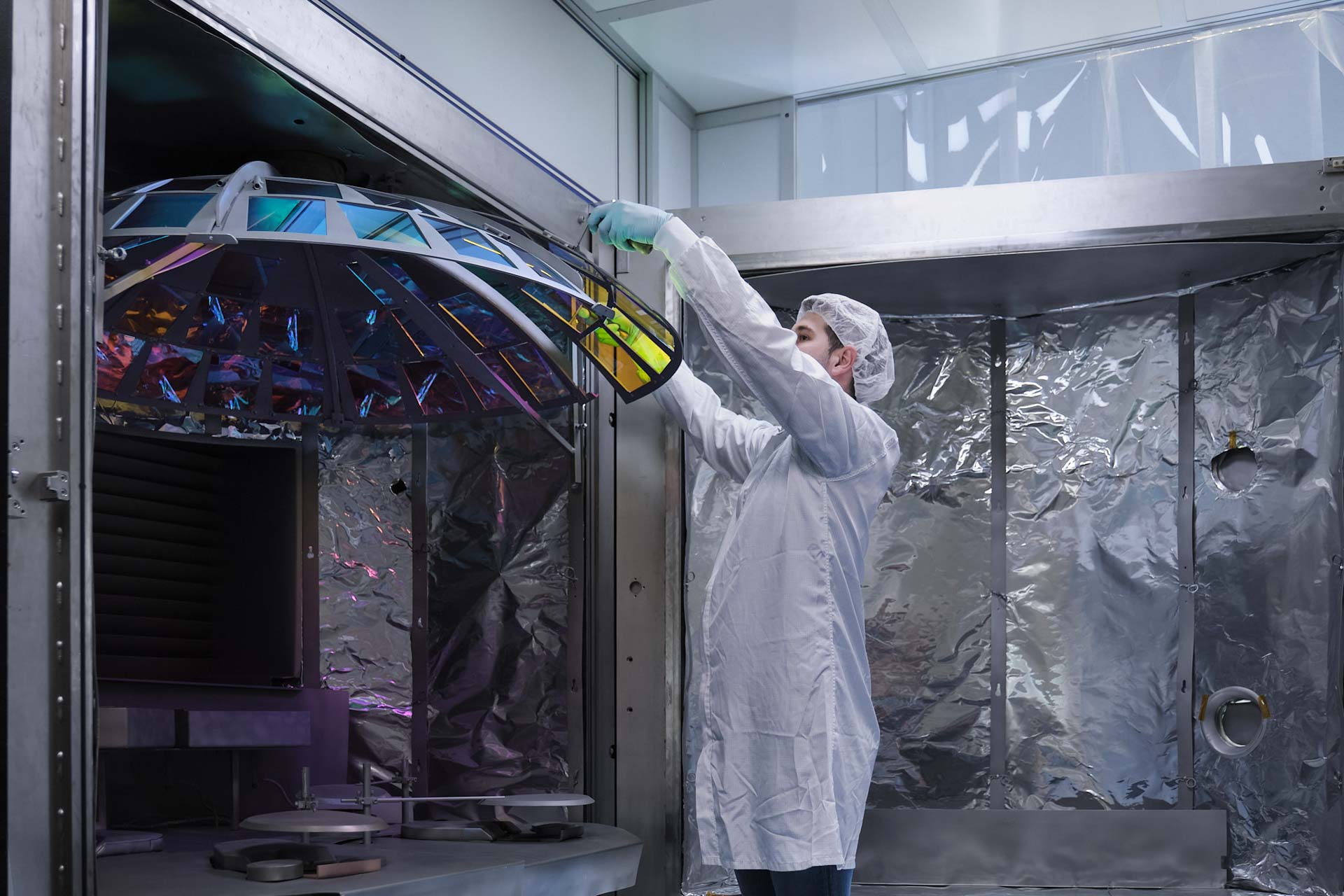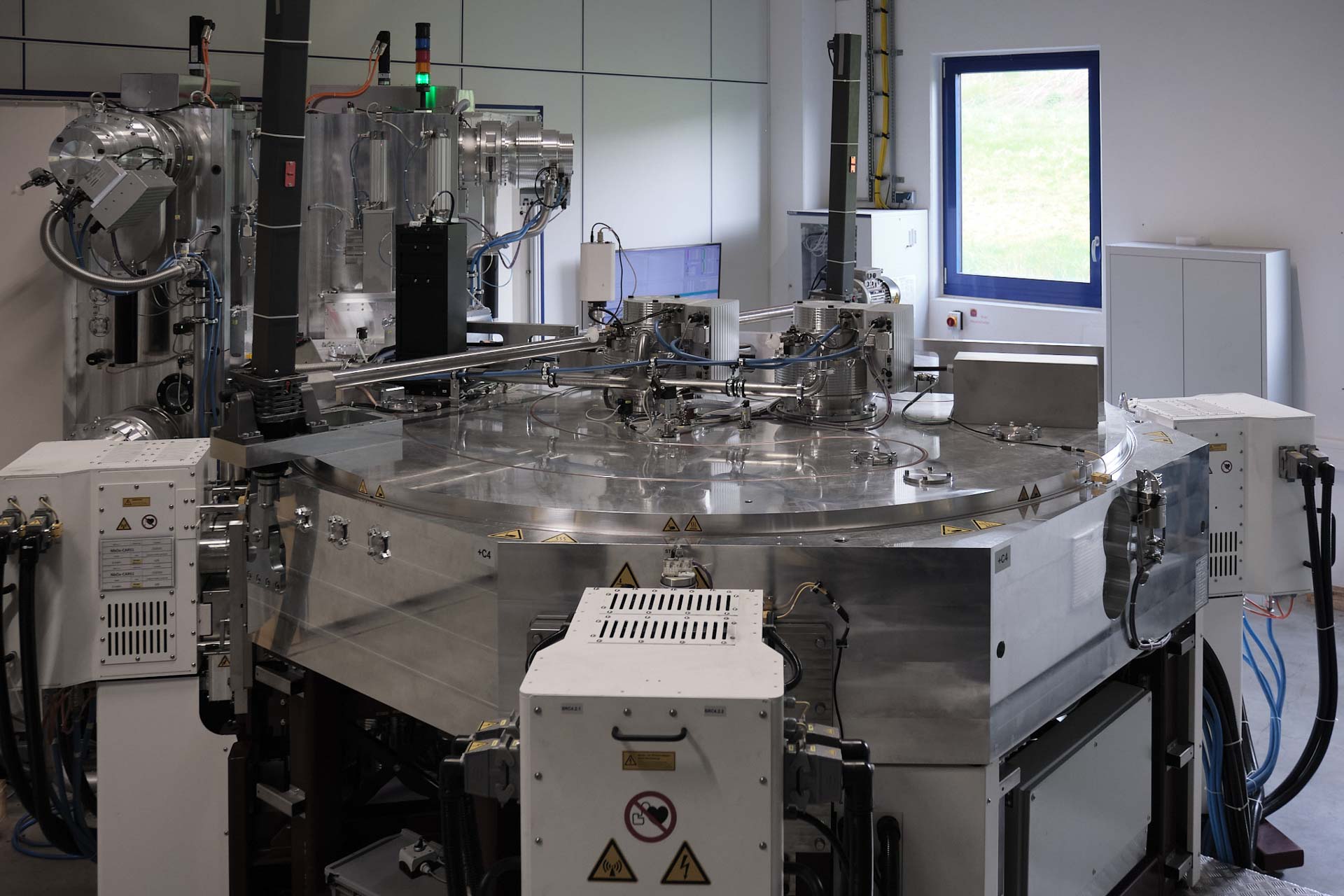
Physical vapour deposition
PVD coating processes for thin films
We offer thin-film technology for optical applications with a wide range of processes, primarily using the PVD (Physical Vapour Deposition) process. This coating process takes place in a vacuum and can be used to coat glass, optical glass, metal substrates, plastics, and ceramics.
Our physical vapour deposition processes include the following technologies:
Evaporation process / PVD coating
- Electron beam evaporation for metals and their compounds
- Electron beam evaporation with ion support
- Sputtering (sputter deposition, cathode sputtering), e.g., magnetron sputtering (MS)
- Thermal evaporation for metals and their compounds with melting points up to approx. 1800°C
Various materials can be vaporised to condense as a layer on a substrate: numerous metals, oxides, fluorides, sulphides, and semiconductors. Reactive gases such as oxygen (O2) or nitrogen (N2) can be added to oxidize or nitride metals or semiconductors during deposition. The substrates are usually rotated at a constant speed during the coating process. The thickness of the individual layers produced using the PVD process is around 100 nanometres (nm). Typically, multiple layers are applied, resulting in total layer thicknesses up to several tens of micrometres (µm).
The adhesive strength, density, and hardness of the applied layers can be significantly increased by heating and/or bombarding the substrates with ions. We can precisely control properties such as reflection, transmission, and other factors in various wavelength ranges and at different angles of incidence using optical coatings. The resulting layers are used in optics, the automotive industry, sensor technology, as well as in medical and electrical engineering.



Electron Beam Evaporation
Electron beam evaporation (EBE) involves evaporation in a vacuum using an electron beam gun, also known as 'e-beam coating.' The electron beam gun emits a high-voltage electron beam directed into a cooled melting pot containing the coating material. This heats the material until it vaporises or sublimates, directing the resulting particle beam at the substrate, where it condenses to form a layer. A wide range of coating materials can be applied using electron beam evaporation.


Ion Assisted Deposition
Ion assisted deposition (IAD) is a variant of electron beam evaporation, using an additional ion source with direct current plasma, such as APS or End-Hall, or with inductively coupled plasma (ICP). The plasma is directed onto the calotte with the substrates, creating a denser microstructure of the resulting layers and reducing the risk of damage. However, some materials, such as fluorides, cannot be applied with IAD.


Magnetron sputtering
In sputtering, also known as cathode sputtering, atoms are removed from a solid (target) by bombardment with high-energy ions. The removed material condenses on the substrates, achieving good layer thickness accuracy, high densities, low roughness, and good layer adhesion.
Thermal Evaporation / Vapour Deposition Technology
Thin layers of metals (e.g., copper, silver) or other materials (e.g., indium tin oxide, silicon dioxide) can be deposited on substrates using thermal vapour deposition. The layer-forming material is heated by an electrical resistance evaporator.



Advantages of thin-film coating using PVD technology
All PVD processes produce very thin layers, especially compared to other coating technologies such as galvanic processes or lacquering. This is why PVD coating is also referred to as ‘thin film deposition coating’ or ‘thin film coating.’ The coating technologies are used for producing optical coatings on glass, plastic, or metal substrates. Benefits include:
- Influencing reflection, transmission, and emission behaviour according to customer application requirements
- High chemical stability
- Very good thermal stability


Our systems at a glance
We use state-of-the-art coating systems with different technologies:
- 28 vacuum coating systems in various sizes
- Inline coating system with multi-chamber system
- Ion assisted deposition (IAD)
- Magnetron sputtering systems
- High-vacuum coating systems with planetary system

